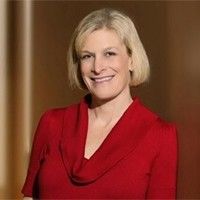- Center on Health Equity & Access
- Clinical
- Health Care Cost
- Health Care Delivery
- Insurance
- Policy
- Technology
- Value-Based Care
Bringing Frontline Experience to Tackle Barriers That “Get in the Way” of the Best Cancer Care
Coverage from The US Oncology Network Payer Transformation Summit, held September 27-29, 2023, in Atlanta, Georgia.
Evan Osborne, MBA, MPH, BSRT(T) (ARRT), PMP, spent more than 10 years as a therapist in radiation oncology. Lydia Mills, MSW, LCSW, is a licensed clinical social worker who spent most of her career working directly with patients. For years, each had a front-row view of the barriers, big and small, that can keep patients with cancer from getting the care they need to save their lives.
Osborne

Mills

As Osborne explained, patients receiving radiation oncology must come day after day for treatment. “They’re really long prescriptions, so there are a lot of needs that must be met for them to show up for their appointments,” he said. Years before Uber or Lyft were available, Osborne worked to address transportation gaps for this specific group of patients.
For Mills, the story was similar. Long before social determinants of health (SDOH) was a term, Mills advocated for patients whose lack of food or housing created roadblocks. “My whole career has been really helping break down those barriers for people,” she said. With her clinical license, Mills may have focused more on a patient’s psychological or emotional needs, but finding resources—and communicating needs among providers, families, and the patients—was always part of the picture.
In 2021, Osborne joined McKesson, which supports The US Oncology Network, as oncology industry lead, value-based care transformation. Working with Lalan Wilfong, MD, senior vice president, payer and care transformation, and guided by a health equity mission statement,1 Osborne and the team spent 2 years building out a strategy for practices to assess for SDOH, connect patients with resources, and measure whether those efforts are working.
Each of these steps is required under Medicare’s Enhancing Oncology Model,2 Osborne said, “but the commercial payers are very interested in it as well, because it shows the true picture of what the providers are doing for their patients.”
Mills, who spent several years with an oncology practice in Portland, Oregon, is part of that team as senior manager, supportive care programs, clinical services, at McKesson. “There’s always been this awareness that there [are] so many things that get in the way of people starting treatment, finishing treatment, and getting into the clinics,” she said. “So, it really started with some education.”
First, she said, providers had to learn the terminology: What are SDOH? What are health-related social needs? (Although the terms are often used interchangeably, health-related social needs are technically what result from SDOH.)3
Osborne outlined how the SDOH strategy took shape. The team spent time discussing which pieces had to be built from scratch and which elements could be achieved through partnerships. Osborne and Mills described a dynamic that has come up often in conversations with physicians: No one wants to ask patients about their lack of food or housing unless they have the ability to address these issues.
The solution, Osborne said, came with the platform findhelp.org, which helps patients and oncology providers connect with free or discounted services based on zip code. Findhelp.org is networked with more than 600,000 community-based organizations nationwide, he explained, and through its partnership, The US Oncology Network can add preferred programs that had existing referral relationships.
“We went live with that platform in early June,” Osborne said during a late September 2023 interview. Although at that point there were still some “growing pains” to work through, he said the early data were encouraging—more than half the patients who had received a referral reported back that they had been helped.
Already, Osborne said, the value of the effort was revealing itself—but how to sustain it was a work in progress. His comments came amid discussions with CMS over several issues, such as elements of the Physicians’ Fee Schedule and the requirements for oncology practices under the MIPS Value Pathways, which are the successor to the Merit-based Incentive Payment System.
“This investment in SDOH is advancing health care, in a broad sense,” he said. “The providers and practices are having to invest additional dollars to offer these white glove services, and you still need to keep the lights on. From a business perspective, how do you sustain these soft-touch initiatives?”
What is equally revealing, Mills said, is the sheer volume of need that has been uncovered as practices use the Distress Thermometer developed by the National Comprehensive Cancer Network to assess patients’ physical, emotional, social, practical, and spiritual concerns.4
“The hard piece is, again, the staffing and having the bandwidth to respond to all of [this], and just the lack of resources within the community. And that’s across the country. Where does the funding for those resources come from?” Mills said. “Some payers, some pharmaceutical companies—and some others—are starting to get a little creative.… There’s a lot of studies out there that [indicate] yes, there’s need, but there’s not a lot of ‘What are we going to do about it?’ ”
References
1. McKesson. Better health for all: recommendations to achieve health equity. McKesson Public Affairs website. Accessed November 25, 2023. https://bit.ly/3ReuhvU
2. Enhancing Oncology Model. CMS. Accessed November 26, 2023. https://www.cms.gov/priorities/innovation/innovation-models/enhancing-oncology-model
3. Health-related social needs vs the social determinants of health. Oregon Health Authority. Accessed November 26, 2023. https://bit.ly/3uAE7iP
4. National Comprehensive Cancer Network. Distress management, version 1.2024. Accessed November 26, 2023. https://bit.ly/3HSxLPA

